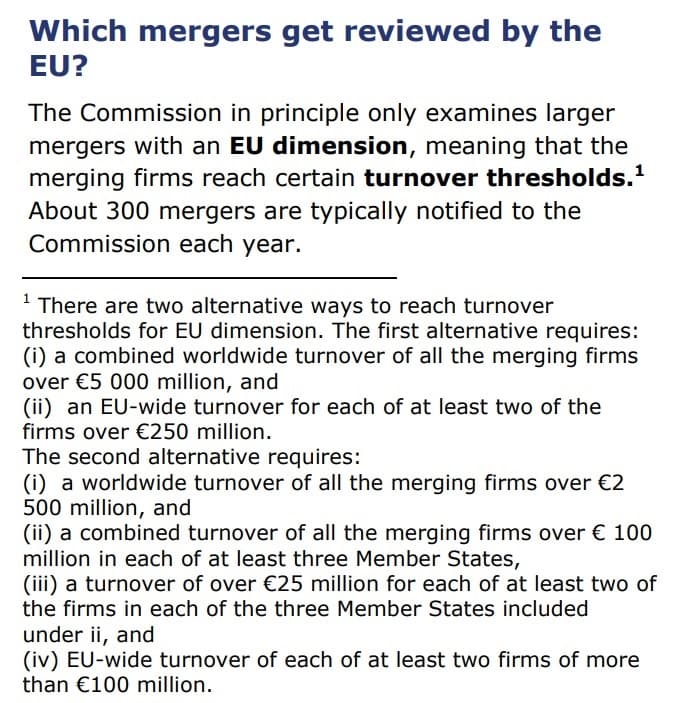What’s Up With Illumina’s Acquisition of GRAIL?
Table of contents

If you want to land a job at a top investment bank, there’s an expectation that you’ve read certain material. Even though prop trading desks have gone the way of the dodo, books like Liar’s Poker and Reminiscences of a Stock Operator are must-reads. So is the 592-page monster, Barbarians at the Gate, a glimpse into the drama that unfolds behind closed doors when mergers and acquisitions (M&A) take place.
While Joe Retail investor sits there in his underwear trying to decide whether or not to buy or sell a few shares of Illumina (ILMN), he’s oblivious to the drama bubbling below the surface regarding the company’s proposed acquisition of GRAIL. To be fair, so are we. That’s why we’re going to take a closer look at what’s happening, especially considering that Illumina is the second-largest holding in our own tech stock portfolio.
The Background Story
The last time we checked in with Illumina was in October 2020 when we evaluated the reasons why Illumina is getting into liquid biopsies. Since then, the company’s revenues faltered because of The Rona, just like everyone else.

Despite the temporary setback, quarterly revenue growth appears to be back on track.
Illumina has nearly everything we look for in a stock. They’re a dominant market leader that provides the picks and shovels that power numerous disruptive technologies.

The equipment they sell requires lots of high-margin consumables (constituting 70% of revenues) that make this a very profitable business. They’re also actively exploring other avenues for expansion, like Helix which never went anywhere. One startup that seems to be going somewhere is GRAIL.
GRAIL was originally formed by Illumina in 2015. Starting in 2017, Illumina reduced its ownership of GRAIL to below 20 percent of the company’s voting interest. Currently, Illumina retains 14.5 percent ownership of GRAIL’s voting and shares. When GRAIL announced their initial public offering, Illumina stepped in and offered to purchase the remaining outstanding shares, therefore acquiring GRAIL. This transaction was met with a great deal of concern from regulators.
The Latest Updates
There are four stakeholders we need to consider for this story, each with their own motivations. Let’s start with the regulators.
The European Commission
You may wonder what business the European Commission (EC) has telling an American company what they can or can’t do. So does Illumina, and their main point of contention is that the European Union doesn’t have jurisdiction over their acquisition of GRAIL. Typically, the EC gets involved when companies are of a meaningful size, and are doing meaningful business in the European Union.

The EC admits that Illumina doesn’t qualify for review based on the above criteria. We’re not given the granularity needed to assess this ourselves, but here’s what we know about Illumina’s geographical breakdown of revenues in 2020.
| 2020 | |
| Americas | 1,499.84 € |
| Europe, Middle East, Africa | 761.96 € |
| Greater China | 294.12 € |
| Asia-Pacific | 229.62 € |
| 2,785.54 € |
The claim being made by the EC refers to Article 22, an addition that was made on March 26, 2021, only days before a complaint was filed against Illumina by the Federal Trade Commission (FTC). Essentially, Article 22 was put in place to account for companies that “may develop into playing a significant competitive role on the market(s) at stake.” The emergence of disruptive technologies means that the EC not only looks at turnover, but also turnover that is likely to happen in the future. Now, Member States can raise concerns, and if that merits an investigation, the transaction under examination is supposed to be put on hold.
Article 22 of the Merger Regulation allows for one or more Member States to request the Commission to examine, for those Member States, any concentration that does not have an EU dimension but affects trade between Member States and threatens to significantly affect competition within the territory of the Member State or States making the request.
The Member States that requested the commission to examine this transaction were Belgium, France, Greece, Iceland, the Netherlands, and Norway. (Iceland?)
And that sums up the main point of contention. Illumina’s lawyers believe that this doesn’t grant the EU jurisdiction over the deal, and the EC disagrees. Here’s a basic timeline of what’s happened so far across the pond:
- 26 March 2021 – The new guidance – Article 22 – was adopted by the EC
- 19 April 2021 – A handful of European countries complained about the proposed Illumina-GRAIL transaction
- 22 July 2021 – EC opens up an in-depth investigation to determine ” whether its initial competition concerns are confirmed.”
- 18 August 2021 – Illumina closes GRAIL acquisition
- 20 August 2021 – EC says Illumina-GRAIL may have breached “the standstill obligation” and “can be fined up to 10% of their annual worldwide turnover.” Another investigation is opened to examine this breach.
- 20 September 2021 – EC determines that by closing their deal, Illumina and GRAIL breached the standstill obligation and a Statement of Objections is sent to Illumina and GRAIL
The original EC investigation is expected to be completed no later than 29 November 2021. At the same time, Illumina has challenged the jurisdiction of the EC in the General Court of the European Union and expects a decision by early 2022. This whole thing becomes a moot point if the FTC decides to disband the Illumina-GRAIL merger.
The Federal Trade Commission
The initial complaint filed by the FTC on March 30th claims that Illumina’s acquisition of GRAIL gives them an unfair competitive advantage. Since every provider of liquid biopsies uses Illumina’s sequencing equipment, this puts the company in a position where they could harm competitors by increasing their prices or through any number of ways.
It’s perfectly acceptable to respect our legal system while finding the whole legal process rather annoying. Lawyers can’t charge exorbitant rates unless they use self-important language that nobody can decipher. To see what we mean, just go to the online FTC case and try to read some of these documents. Even the most tenured lawyer would have a tough time assessing who is in the lead. An incredible amount of effort is going into this trial, and it’s anyone’s guess as to the outcome.
Illumina and GRAIL
Last month, Illumina announced the acquisition of GRAIL was complete.
While GRAIL is now a wholly owned subsidiary of Illumina, we will hold GRAIL separate and independent until the European Commission finishes its review.
That didn’t pacify EC regulators much. Illumina talks about how “the stakes here are high because simply put, this deal saves lives,” about 10,000 in the U.S. alone over the next nine years. They talk about continuing to work with regulators, noting steps they will take to ensure competitors are treated fairly.
Illumina has made an open offer, available on our website, contractually committing to continue to make all our products available to every oncology customer on the same timeline and at the same price as GRAIL.
During their latest earnings call, Illumina’s CEO said they “don’t have employees on the hill that are telling the Illumina story to the various agencies” and that needs to change. In other words, they didn’t do the sufficient prep work needed to ensure U.S. regulators would perceive this transaction in the most favorable way possible. While we won’t know until early next year what the final outcome will be (Illumina expects an FTC decision by Q1-2022), here’s what happens if the transaction unwinds.
Illumina acquired GRAIL for total consideration of $8 billion, consisting of $3.5 billion in cash and $4.5 billion in shares of common stock. If the transaction is nullified, then Illumina receives their cash and shares back. The latest Illumina 10-K also talks about a $300 million merger termination fee along with an additional $300 million investment in shares of GRAIL. Probably the biggest loss will be the time and resources spent on the deal along with the diminished relationships with regulators.
Our Thoughts FWIW
Our combined legal experience amounts to waking up in the county drunk tank after a few too many rounds at Grumpy’s Goat Shack. But enough about last week’s team building offsite. We’re here to talk about what action we should take – if any – in the face of all this drama.
It’s tempting to think there’s some sort of pissing contest going on here, but the truth is that Illumina’s lawyers are guiding this. If Illumina believes the EC has no jurisdiction, they should rightfully ignore the unfolding drama. And they are. We’ll eventually find out if they’re right when a decision is made early next year. Regardless of the outcome, they’re not making any friends across the pond.
Probably more concerning is the pending decision of the FTC in the States. Based on the extent to which this is being fought in the courts, and the EC being in cahoots with the FTC, things don’t look good. An article by Law360 talks about how FTC staff were in contact with their European counterparts about this proposed deal well before March. The adoption of Article 22 just four days before the FTC launched their complaint seems rather timely as well. Will Illumina snubbing the EC sway the FTC in any way? On paper, of course not, but in reality it might.
If the merger isn’t allowed to proceed, then that’s that. A lot of time and energy was wasted and precedent has been set that any disruptive tech company doing M&A can be subjected to increased scrutiny by regulators in the EU. Illumina shares will probably take a dump, and it may be a good time to add. But it does raise concerns around how Illumina plans to build their business if both their billion-dollar life sciences startups – Helix and GRAIL – fail to add value to shareholders.
Conclusion
The GRAIL acquisition is sure to be occupying everyone’s time so we’ll be glad when that noise dies down. Anytime a company’s senior management team and legal team are tied down battling regulators, it’s time and energy that could be spent growing the business. Of course, Illumina will argue that this battle is a necessary evil for growing the business, but if they don’t succeed, it means they didn’t properly think things through. And even if the transaction does happen, good luck trying to expand GRAIL’s testing capabilities in the European Union.
Sign up to our newsletter to get more of our great research delivered straight to your inbox!
Nanalyze Weekly includes useful insights written by our team of underpaid MBAs, research on new disruptive technology stocks flying under the radar, and summaries of our recent research. Always 100% free.















Long term it is crucial how Illumina will be able to compete with long read sequencing companies: Pacific Biosciences and Oxford
Nanopore. Illumina has markt cap $60B. Oxford Nanopore IPO will be around $5B and Pacific Biosciences has market cap around $5B.
I expect Oxford Nanopore will be growing rapidly in the next couple of years, so it could reach market cap $15-20B a few years from now. So that’s why it is important for Illumina to have GRAIL and be able to grow revenues in areas other than just sequencing machines.
It does seem like Illumina isn’t doing much in the area of long read sequencing. Oxford Nanopore seems like a good way to play that niche bit they’re overvalued at the moment.
Fierce Biotech article:
Illumina’s quest for Grail potentially blocked for good, as EU jacks up legal pressure: report
It may be the end of the road for Illumina’s quest for Grail. After extending yet another olive branch to the European antitrust regulators adjudicating its premature acquisition, Reuters reports that the $8 billion deal is likely to be vetoed.
They also follow the commission’s recent upping of the ante: On July 19, the EU’s competition watchdog officially alleged Illumina had breached regulations by closing the deal before the investigation could be completed.
“This is a serious breach of the standstill obligation,” Vestager said. “Illumina and Grail have openly done so by implementing their deal while the Commission is still carrying out its in-depth investigation. This could result in hefty fines.”
Those penalties could reach up to 10% of Illumina and Grail’s worldwide revenue—an amount that topped $4.5 billion in 2021 and is expected to pass $5 billion this year.
We’ll never understand why management thought it was a good idea to try and steamroll regulators. This could get ugly. Let’s hope ILMN thought this through and they have a card up their sleeve.